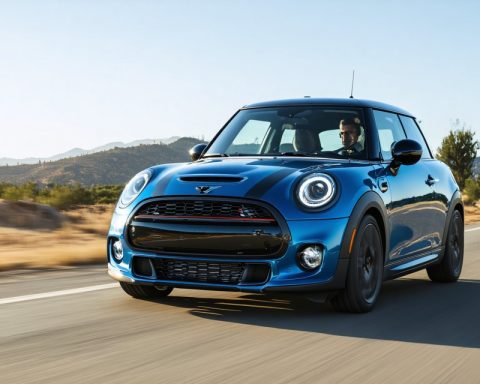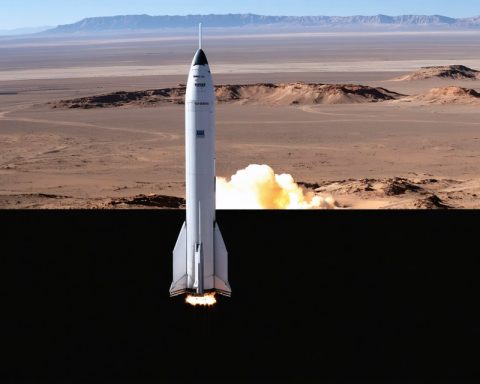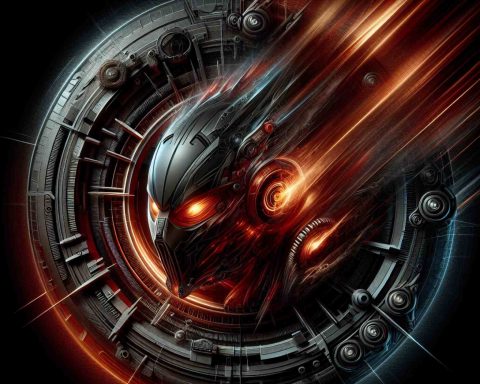- Mini is strategically maintaining a focus on internal combustion engines (ICE) amid the growing trend toward electrification, particularly for the North American market.
- This approach aligns with American consumer preferences, where traditional gas-powered cars remain popular despite the push towards electric vehicles (EVs).
- Current projections indicate only 9.1% of car sales in the U.S. will be electric by 2025, highlighting the slow adoption of EVs.
- Mini plans to introduce a new gas-powered compact crossover tailored to U.S. consumer demands, bridging the gap between current offerings.
- While Mini has explored EVs, initial challenges with the Mini Cooper SE reveal the complexities of transitioning to electric technology.
- Mini’s approach balances consumer readiness, market demands, and technological advancements, blending the traditional with the innovative.
The British icon that has long stood for all things compact and quirky, Mini, is navigating a road less taken amidst the industry’s electrification whirlwind. Picture the Mini not racing towards an all-electric horizon, but instead cautiously navigating around it, clinging to the growl of the internal combustion engine (ICE) as a way to stay relevant, particularly in North America.
The automotive landscape today might seem like an electric storm sweeping through, but Mini’s decision to keep cranking out gas-powered models reeks of pragmatism over presumption. While competitors zoom ahead into the electric future, Mini’s route considers the map of its consumers—Americans who overwhelmingly prefer traditional engines. Heartbeats still quicken at the roar of a combustion engine, despite the allure of silent electric propulsion.
However, this isn’t a story about nostalgia; it’s a business-savvy response to current market demands. Mini’s willingness to bide its time with gasoline cars while still exploring future electric options is driven by the lukewarm adoption of EVs in the U.S. market. North Americans have been slow to trade fuel pumps for charging stations, a truth reflected in the current projection that electric vehicles will only comprise a meager 9.1% of car sales by 2025, according to J.D. Power.
Michael Payton, Mini’s confidant in the Americas, has hinted at the brand’s blueprint to introduce a new gas-powered compact crossover to align with U.S. preferences. This vehicle, potentially hinting at a gap-filling marvel somewhere between the current offerings, serves to gently massage the American auto consumer’s reluctance to flip from octane to kilowatts.
Mini’s technological escapades in EVs are nothing new—remember Los Angeles in the 2003 remake of The Italian Job? The petrol-sniffing Minis sprinted across the screen, yet were stealthily refitted with electric motors to keep the city’s air clear. Off-screen, however, the real-world attempt with the Mini Cooper SE unveiled hiccups—particularly a drivetrain borrowed from an older BMW that fell short in range and power department. These initial stumbles have served as a wake-up call, illustrating that the journey towards electric dreams is fraught with unforeseen speed bumps.
For Mini, it’s not a race to the electric line, but rather a careful calibration of consumer readiness, market conditions, and technological advancements. As Mini navigates its dual strategy, it crafts a narrative of a brand adept at balancing the old with the new—lingering with one foot in the familiar while tentatively dipping the other into futuristic waters.
So, the purr of the gas engine isn’t slipping quietly into the night just yet. Instead, it thrums with the purpose of fulfilling an enduring love affair with speed, sound, and the seductive crescendos of a combustion symphony. In this calculated gamble, Mini echoes a profound realization: the future, while electric, isn’t here just yet for everyone.
Why Mini’s Bold Move to Stick with Gasoline Cars Could Be Genius
Mini’s Strategic Approach in a Changing Automotive Landscape
In a world where the push toward electric vehicles (EVs) feels relentless, Mini’s decision to continue producing gasoline-powered automobiles might initially seem contrarian. However, this strategy is deeply rooted in a nuanced understanding of consumer behavior, market trends, and technological readiness, particularly in America.
The North American Market’s Hesitation
While headlines often tout the rapid rise of EVs, the North American market tells a different story. A significant portion of American consumers remains hesitant to switch from traditional internal combustion engines (ICE) to electric vehicles. As of recent projections, EVs are expected to account for only about 9.1% of U.S. car sales by 2025 (source: J.D. Power).
Key Reasons for Reluctance:
– Infrastructure Limitations: Many potential buyers express concerns about the current lack of widespread charging infrastructure necessary to support everyday usage.
– Range Anxiety: Despite technological advancements, the fear of running out of battery remains a significant barrier for consumers accustomed to the convenience of refueling at gas stations.
– Cost Considerations: The upfront cost of EVs, although decreasing, still poses a financial hurdle compared to ICE vehicles.
Mini’s Calculated Bet on Gasoline Cars
Business Perspective:
By continuing to offer gasoline models, Mini isn’t just catering to current consumer preferences but also providing an essential bridge for the traditional car enthusiast who’s not ready to switch to EVs entirely. Mini’s introduction of a new gas-powered compact crossover tailored to U.S. preferences illustrates the brand’s commitment to an incremental transition rather than an overnight overhaul.
Nostalgic and Emotional Factors:
The appeal of a roaring engine, visceral connection with vehicle mechanics, and the legacy feeling bestowed by ICE cars continue to resonate with car aficionados. Mini harnesses this allure to maintain brand loyalty while slowly introducing electric alternatives to the market.
The Balance of Innovation and Tradition
Despite a strategic emphasis on gasoline-powered vehicles, Mini is no stranger to electric innovation. Their previous ventures, like the Mini Cooper SE, encountered challenges but provided invaluable insights into future product iterations.
EV Challenges and Learning Opportunities:
– Drivetrain Shortcomings: The reliance on an older BMW drivetrain in the original Mini Cooper SE was a pivotal learning moment, underscoring the importance of bespoke, modern solutions in EV design.
– Technological Readiness: These challenges have led Mini to refine their approach, potentially paving the way for more robust and competitive electric models in the future.
Future Insights and Recommendations
Market Trends and Predictions:
While Mini treads a dual path, broader market analyses suggest that EV growth will accelerate as governments enhance infrastructure and technology evolves. Brands that manage to seamlessly integrate ICE offerings while perfecting their EV models may capture unique cross-section market loyalty.
Actionable Tips for Consumers:
– Assess Your Needs: Before deciding between gasoline and electric vehicles, evaluate your driving habits, access to charging facilities, and environmental considerations.
– Stay Informed on Incentives: Government incentives for EV purchases may offset some of the cost barriers.
– Monitor Advancements: Keep an eye on upcoming releases and technology improvements to make informed decisions about vehicle purchases.
With a finger on the pulse of evolving market dynamics, Mini stands poised to navigate the tightrope between tradition and innovation, offering multifaceted solutions for the modern driver.
For more information about the brand’s evolution and current strategies, visit the Mini USA website.








